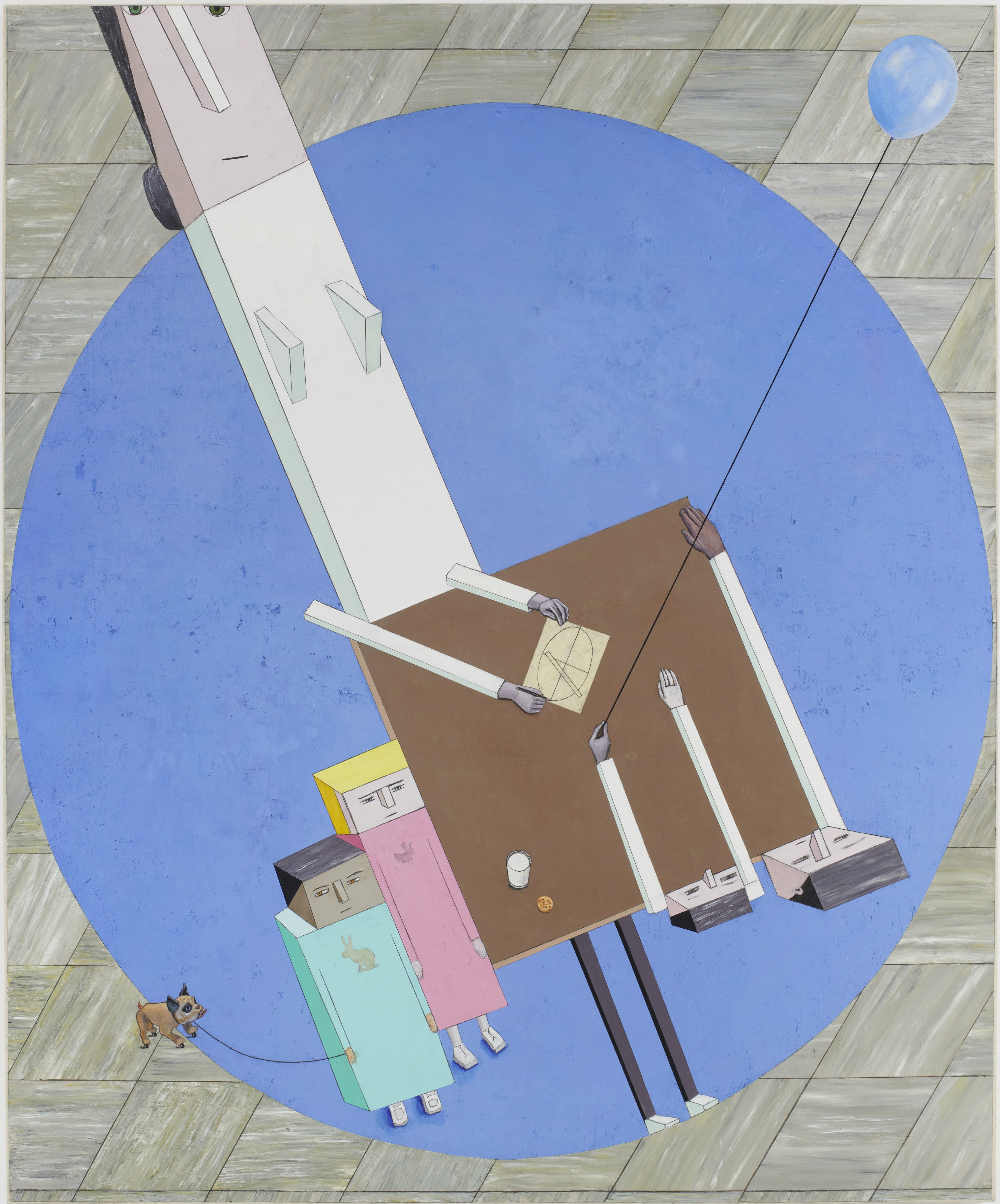Mernet Larsen
(Houghton, Michigan, 1940 - )
Kindergarten
2019
Acrylic and mixed media on canvas
64 x 52 3/4 in. (162.6 x 134.1 cm)
Collection of the Akron Art Museum
Purchased with funds from The Mary S. and Louis S. Myers Endowment Fund for Painting and Sculpture
2019.3
More Information
Kindergarten is a highly realized painting that encompasses several of Larsen’s strategies for disrupting spatial orientation within everyday situations, all of which are highlighted in Mernet Larsen: The Ordinary, Reoriented, on view in the Judith Bear Isroff Gallery March 16 – September 8, 2019, her first solo museum exhibition outside of her home state of Florida. This painting, inspired by a 1920 abstract drawing by Russian Constructivist El Lissitzky, incorporates multiple perspectives, including reverse perspective, but also employs the figures as architecture. Larsen has stated that she derives great inspiration from the process of transforming Lissitzky’s architectural abstractions into narrative compositions. The teacher in this composition is disproportionately large, despite being the furthest figure from the foreground, and her plank-like body seems to form a bridge across the round blue rug, which could also read as a void or body of water that threatens to suck the figures in. Two block-like apparently female children in different colored dresses, one walking a dog, stand parallel to the table and to the body of the teacher, yet they are standing on the rug, whereas the teacher’s legs appear to be parallel to the ground. As viewers, we look down on the children from above, but at an oblique angle. Meanwhile, two other children seated at the table are seen from a bird’s-eye view. One of the children is much larger than the other, and his/her right arm stretches out along almost the entire length of the table’s edge, the hand differing in skin tone from the face (Larsen often collages onto her paintings body parts that are drawn on tracing paper and cut out). The smaller child at the table is holding the string of a balloon that is seen from yet another angle, which triangulates with the teacher’s body. The tiled floor appears as if it is tilted upward at an angle that matches up with the balloon string, pushing the entire contents of the painting toward the picture plane, as if the rug is a disc that could slide down the vertical surface carrying its inhabitants with it. The painting’s oblique angles, parallel lines and multiple perspectives also connect to another source of art historical inspiration for Larsen—12th century Japanese scrolls. The painting rewards close looking surprising and delightful details. The cookie, glass of milk and dog that appears upon close examination to be on wheels and is therefore a toy, add whimsy to this otherwise formal yet strange composition.

